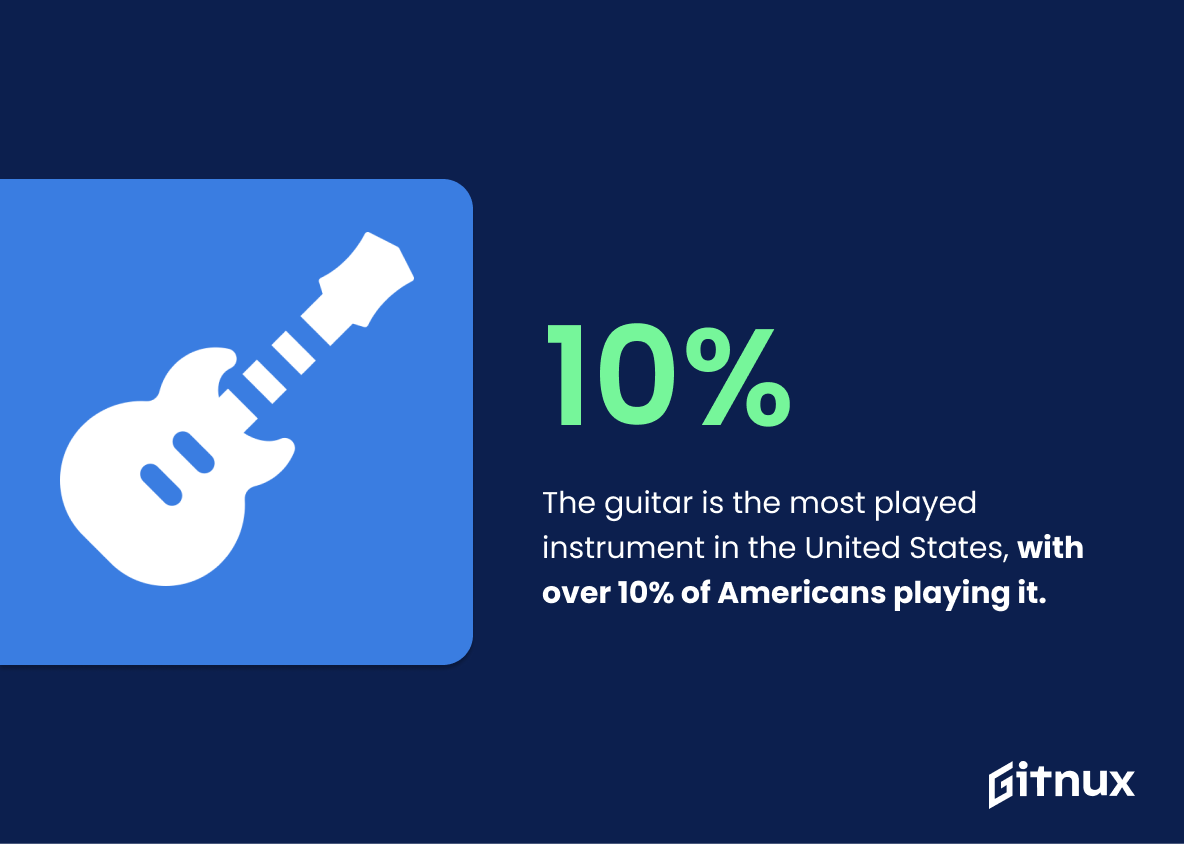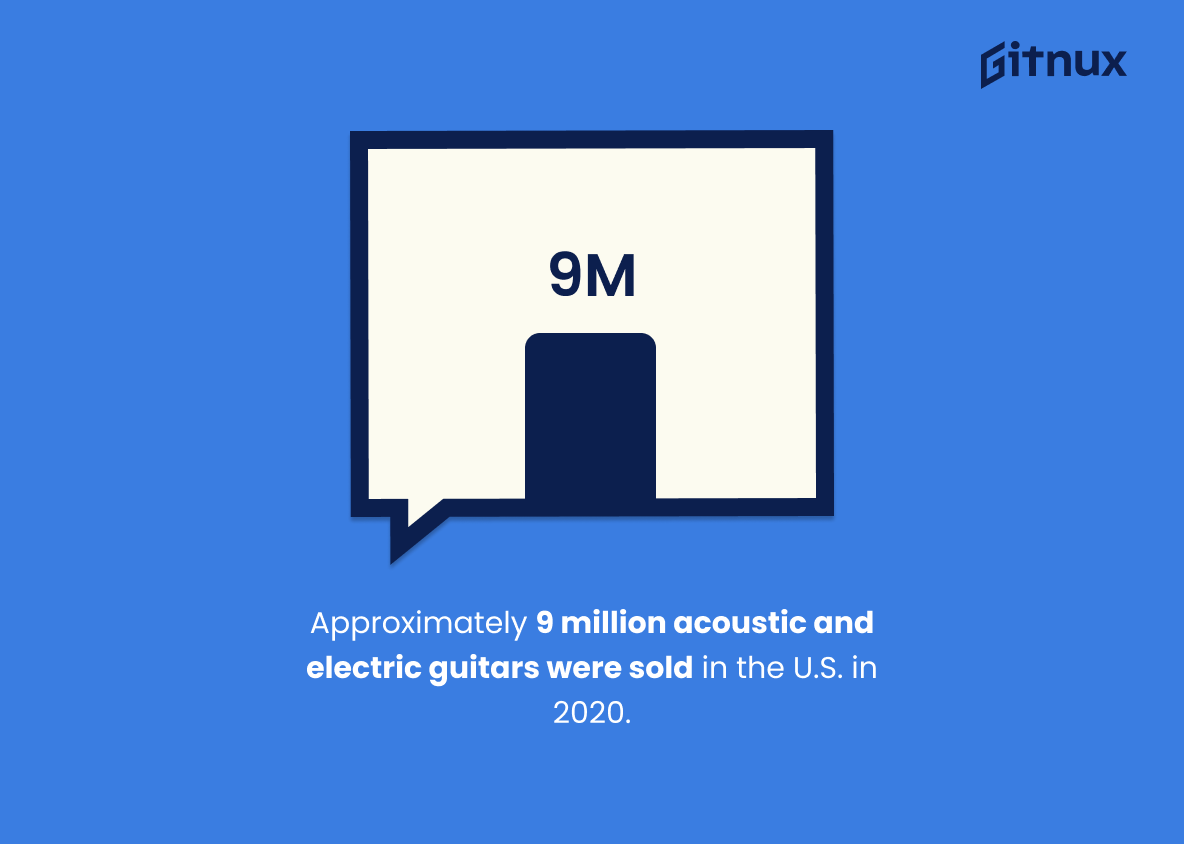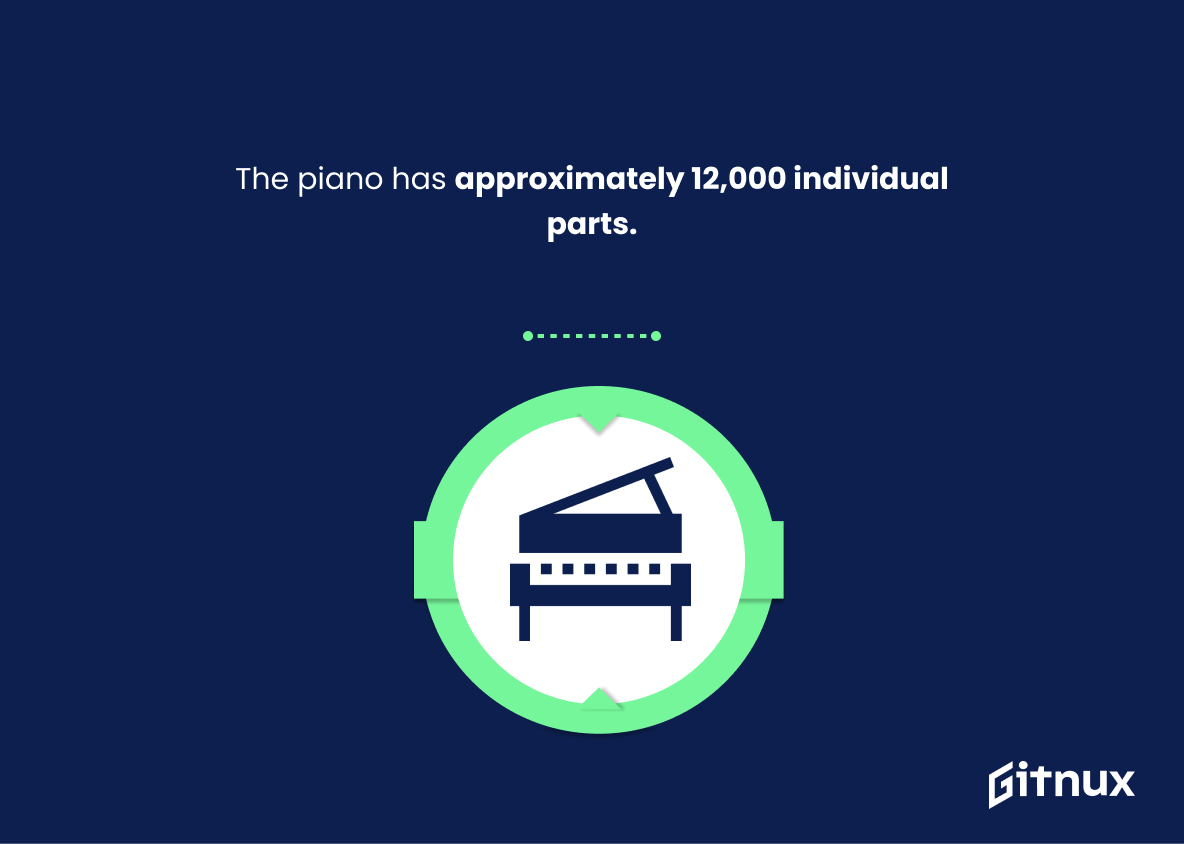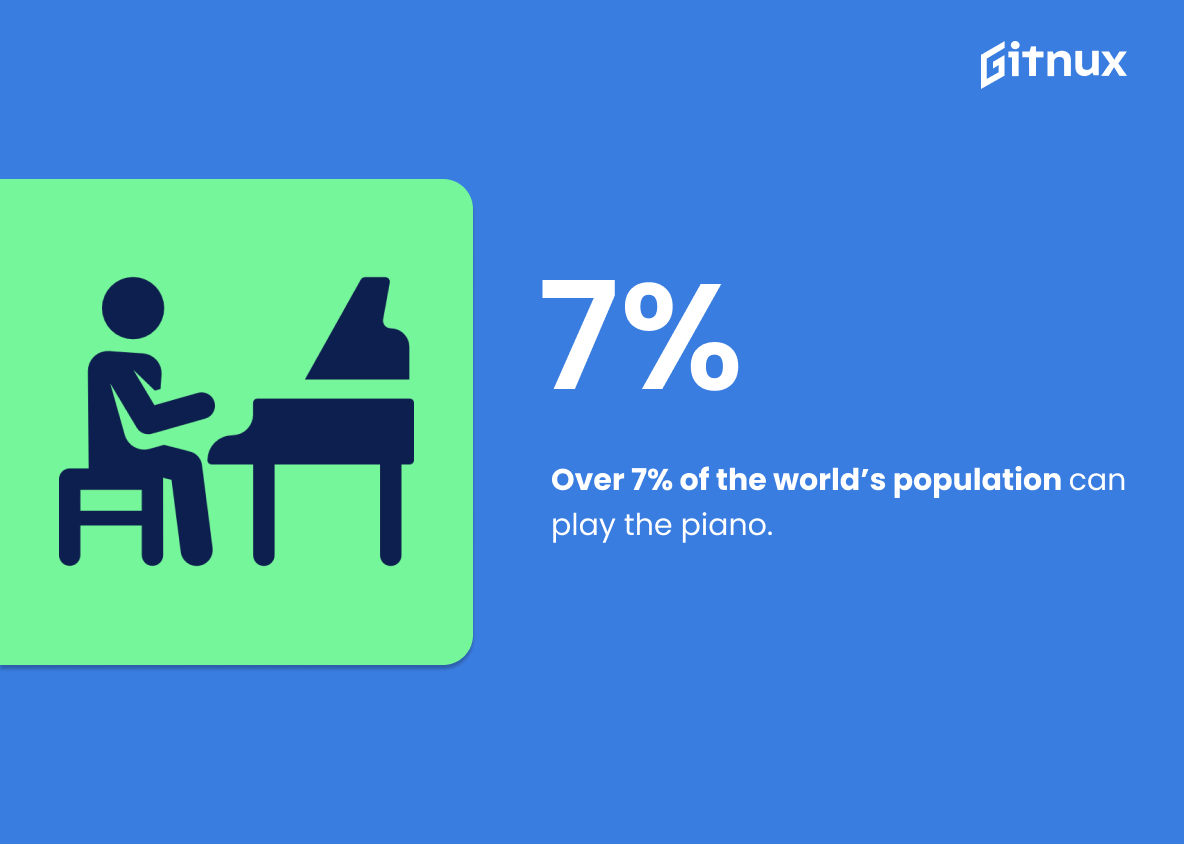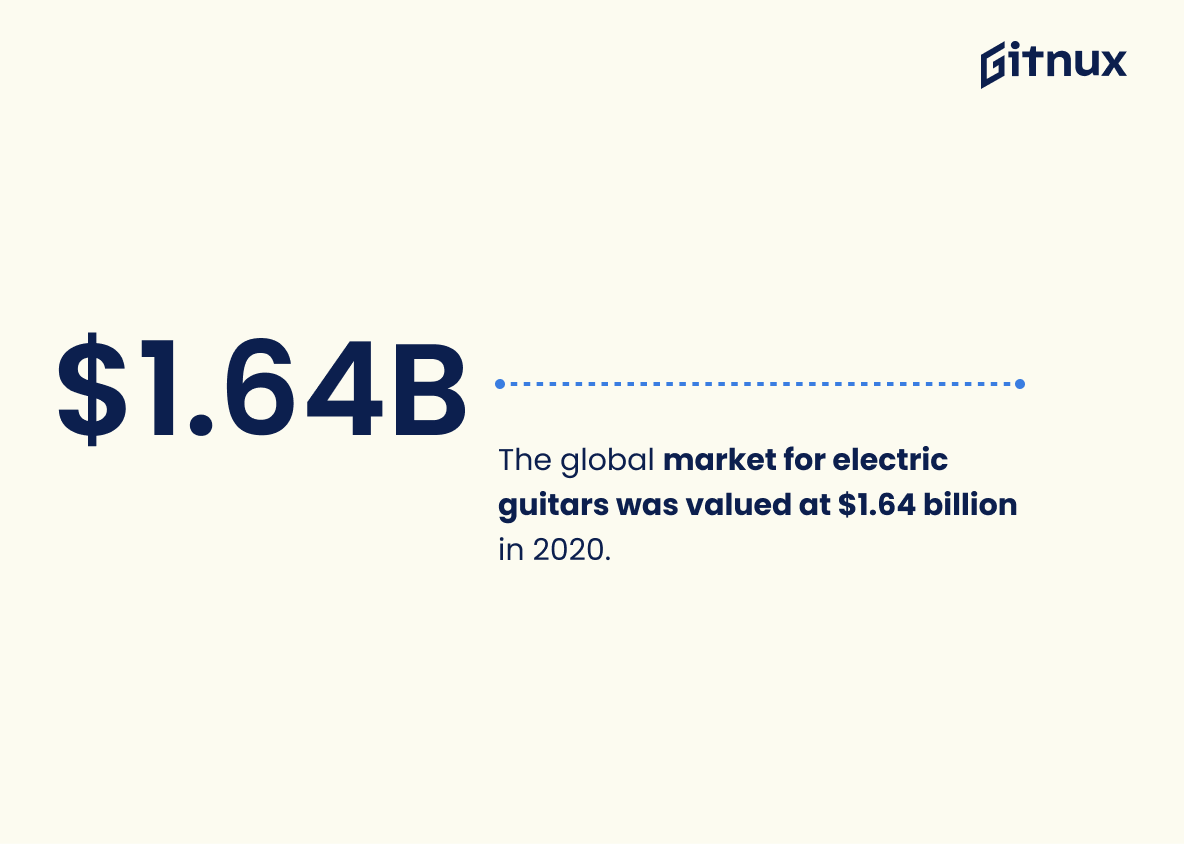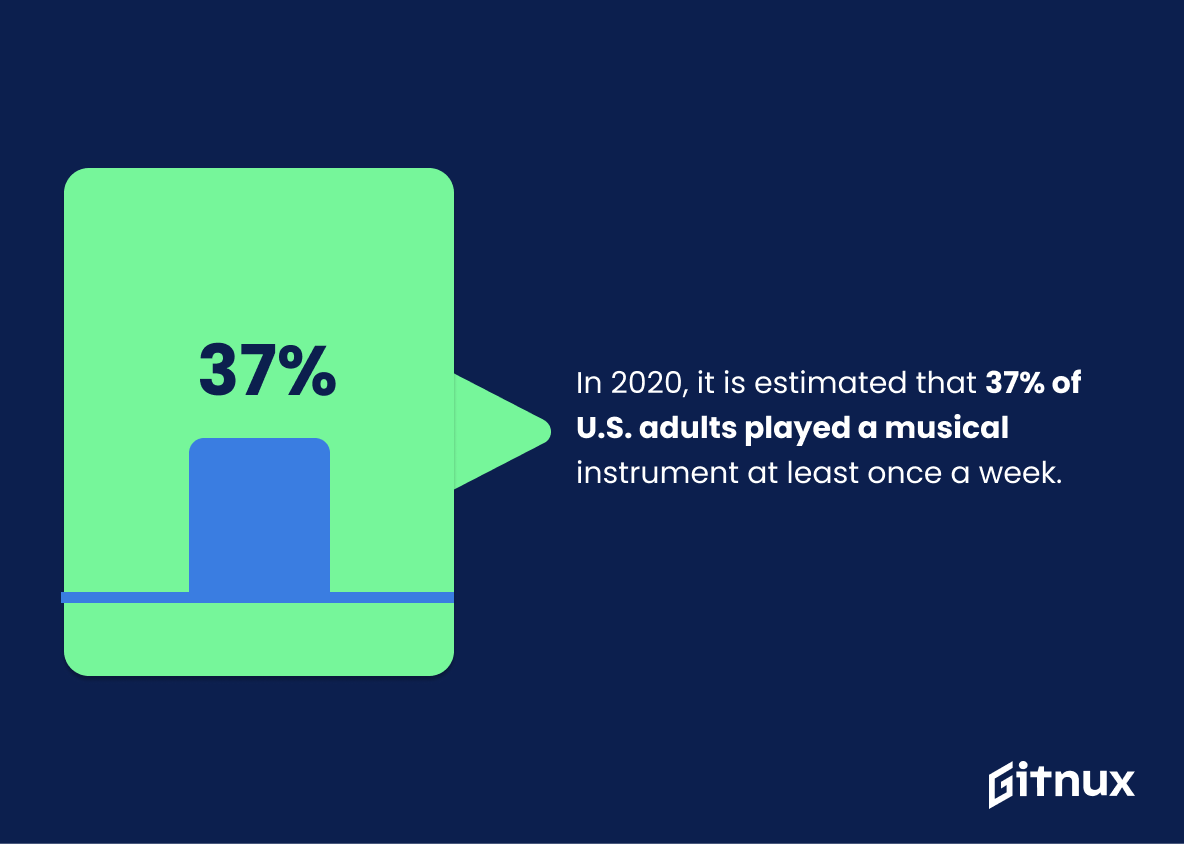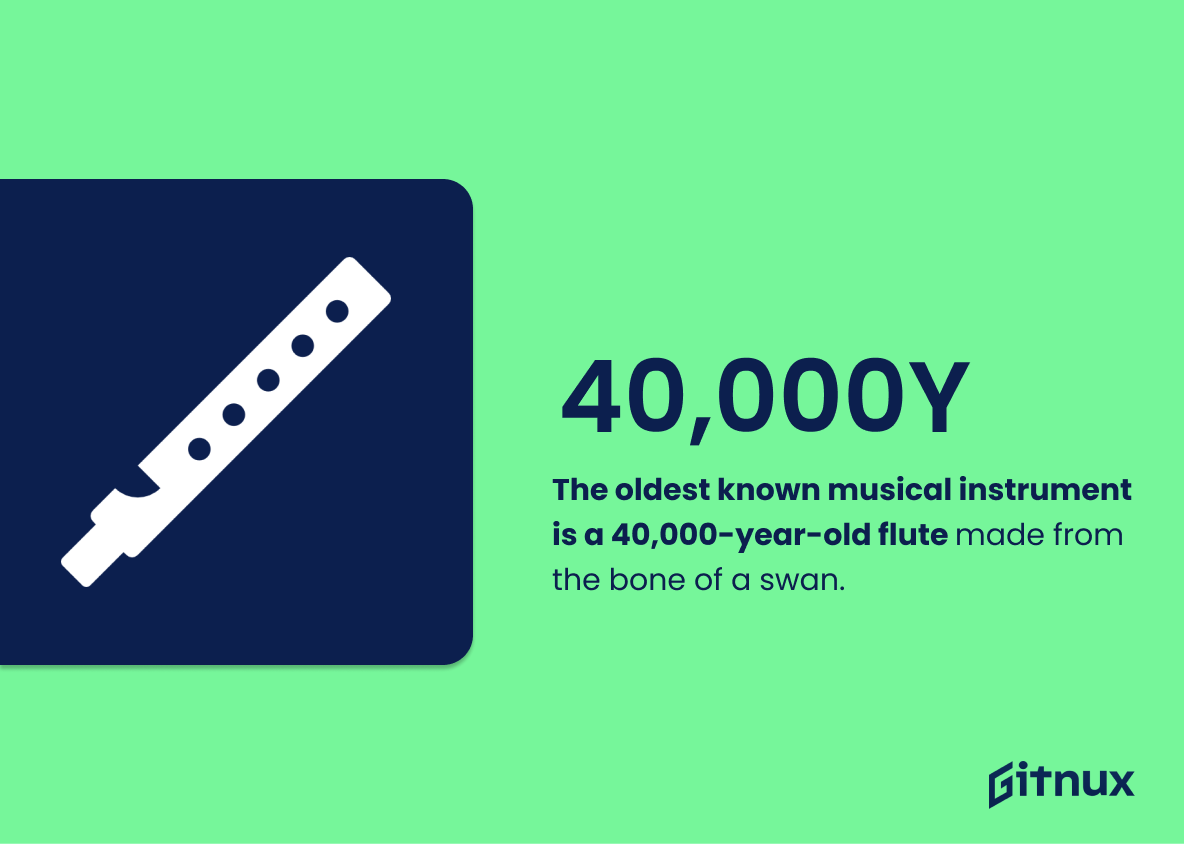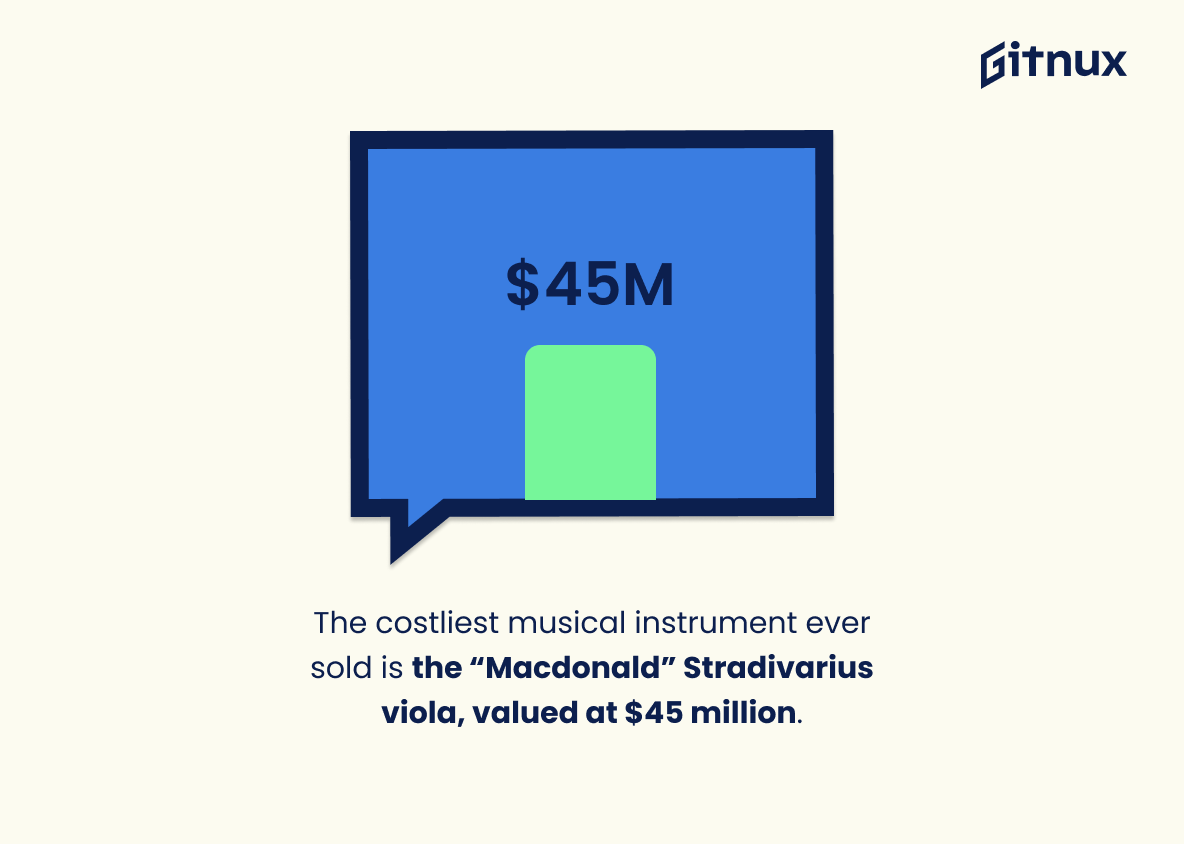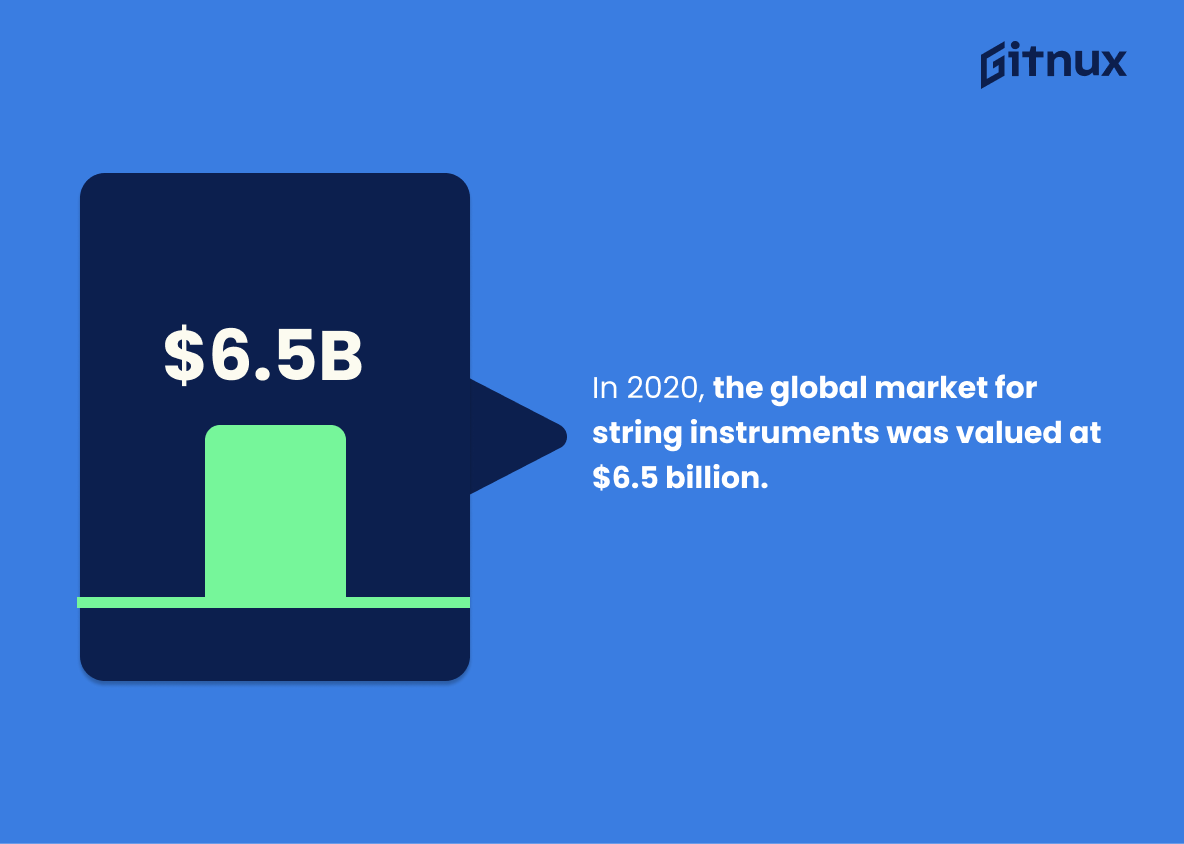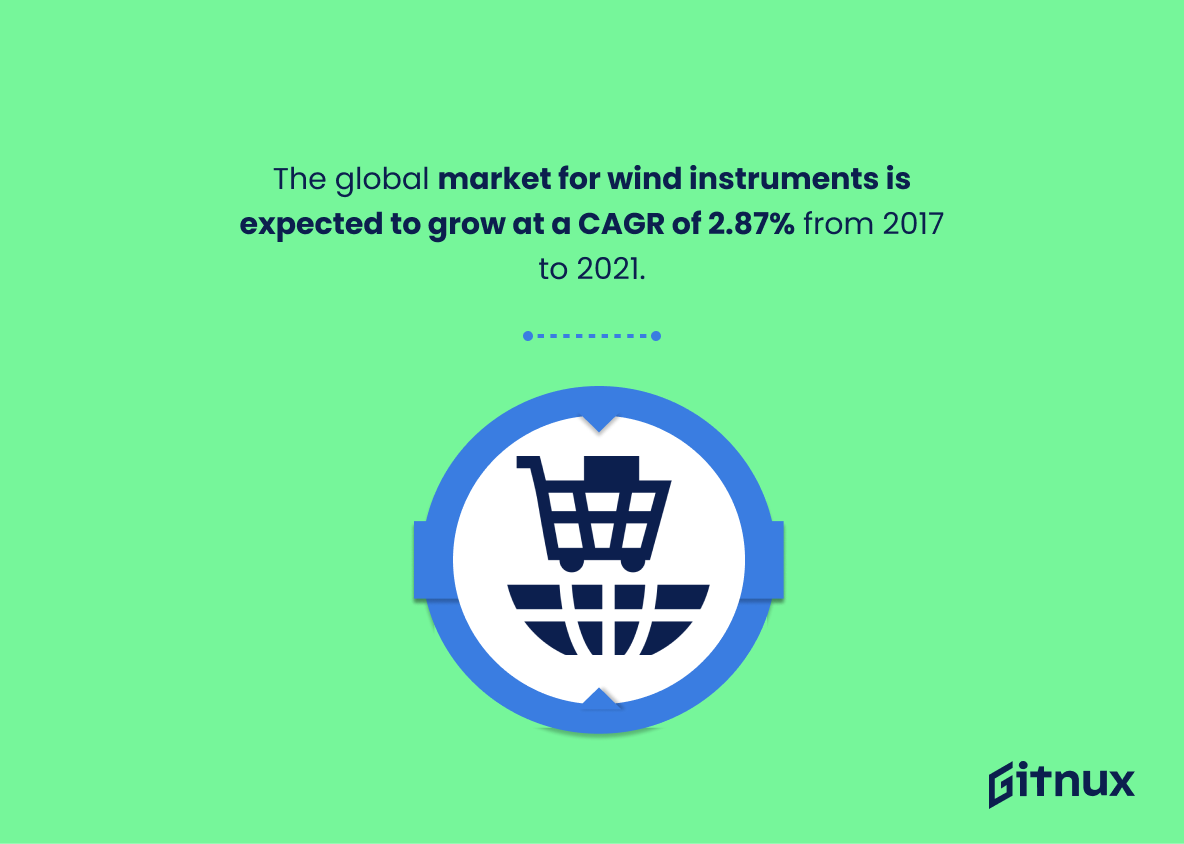Music has been a part of human culture for centuries, and the variety of instruments used to create music is vast. From ancient flutes made from swan bones to modern electric guitars, musical instruments come in all shapes and sizes.
This blog post will explore some interesting statistics about musical instrument types, sales figures, popularity among different countries and regions around the world, as well as other facts related to this fascinating topic.
Instrument Statistics Overview
The guitar is the most played instrument in the United States, with over 10% of Americans playing it.
This statistic is significant in the context of instrument statistics because it highlights the immense popularity of the guitar in the United States. It demonstrates that the guitar is a widely-played instrument, with a large portion of the population engaging in its practice. This statistic is a testament to the guitar’s enduring appeal and its place in American culture.
Approximately 9 million acoustic and electric guitars were sold in the U.S. in 2020.
This statistic is a testament to the enduring popularity of guitars in the U.S. It speaks to the fact that, despite the challenges of 2020, people still found ways to enjoy playing music and express themselves through the instrument. It also serves as a reminder of the importance of music in our lives and the impact it can have on our mental and emotional wellbeing.
The United States is the largest market for musical instruments, with over 40% of global revenue in 2018.
This statistic is a testament to the immense influence the United States has on the global music industry. It highlights the importance of the US market for musical instruments, and how it is a major driver of revenue for the industry. This is especially relevant for a blog post about instrument statistics, as it provides a valuable insight into the current state of the industry.
In 2019, there were approximately 3,464 music instrument and supply retail stores in the United States.
This statistic is a telling indication of the popularity of music instruments and supplies in the United States. It speaks to the fact that music is a beloved pastime for many Americans, and that there is a thriving market for music instruments and supplies. This statistic is an important piece of information for anyone looking to gain insight into the music industry in the United States.
The piano has approximately 12,000 individual parts.
This statistic is a testament to the complexity of the piano, highlighting the sheer number of components that come together to create the instrument. It serves as a reminder of the immense amount of craftsmanship and engineering that goes into the construction of a piano, and the skill required to play it.
Over 7% of the world’s population can play the piano.
This statistic is a testament to the power of music and its ability to bring people together. It shows that despite the vast differences in culture, language, and geography, there is a common thread that binds us all: the ability to appreciate and create music. This statistic is a reminder that music is a universal language, and that it can be used to bridge gaps and bring people together.
The instrument manufacturing industry in the U.S. has an annual revenue of $1.6 billion.
This statistic is a testament to the immense size and scope of the instrument manufacturing industry in the U.S. It speaks to the economic impact of the industry, and the potential for growth and innovation within it. It is a powerful reminder of the importance of this sector in the U.S. economy, and the potential for it to continue to be a major contributor to the nation’s economic success.
The global market for electric guitars was valued at $1.64 billion in 2020.
This statistic is a testament to the enduring popularity of electric guitars, which have been a staple of popular music for decades. It shows that despite the ever-changing landscape of music, electric guitars remain a popular choice for musicians and music fans alike. This statistic is also a reminder of the economic impact of the music industry, which is a major contributor to the global economy.
In 2020, it is estimated that 37% of U.S. adults played a musical instrument at least once a week.
This statistic is a testament to the enduring popularity of music and musical instruments in the United States. It shows that despite the challenges of 2020, many people still found time to enjoy playing music. This statistic is a reminder of the power of music to bring joy and comfort to people’s lives, even in difficult times.
The worldwide electronic instruments market value was projected to be around $50 billion in 2020.
This statistic is a testament to the immense potential of the electronic instruments market. It highlights the immense growth and development of the industry, and serves as a reminder of the immense opportunities available to those who are willing to invest in the sector. It is a valuable insight into the current state of the industry, and can be used to inform decisions about investments and strategies.
The oldest known musical instrument is a 40,000-year-old flute made from the bone of a swan.
This statistic serves as a reminder of the long and storied history of musical instruments. It speaks to the power of music to transcend time and culture, and to the ingenuity of our ancestors in creating instruments from whatever materials were available to them. It is a testament to the importance of music in our lives, and to the creativity of those who have come before us.
The costliest musical instrument ever sold is the “Macdonald” Stradivarius viola, valued at $45 million.
This statistic is a testament to the immense value of musical instruments, particularly the Stradivarius viola. It serves as a reminder of the craftsmanship and skill that goes into creating these instruments, and the appreciation that people have for them. It also highlights the potential for instruments to be incredibly valuable investments, and the potential for them to be passed down through generations.
An estimated 48 million people attended a U.S. school music ensemble concert in 2019.
This statistic is a testament to the power of music and its ability to bring people together. It speaks to the importance of music education and the impact it has on the lives of millions of people. It also highlights the importance of music ensembles and the role they play in providing a platform for students to express themselves and develop their musical skills. This statistic is a reminder of the importance of music in our lives and the impact it has on our communities.
In 2020, the global market for string instruments was valued at $6.5 billion.
This statistic is a testament to the enduring popularity of string instruments. It shows that despite the ever-changing landscape of music, string instruments remain a staple in the industry. This statistic is a reminder of the timelessness of string instruments and their ability to captivate audiences of all ages.
The global market for wind instruments is expected to grow at a CAGR of 2.87% from 2017 to 2021.
This statistic is a valuable insight into the future of the wind instrument market, indicating that the industry is likely to experience steady growth over the next few years. This is important information for anyone interested in the instrument market, as it provides an indication of the potential for investment and expansion in the sector. Furthermore, it can be used to inform decisions about the types of instruments to focus on, as well as the strategies to employ in order to maximize profits.
In 2019, the global percussion instruments market was valued at $1.45 billion.
This statistic is a testament to the immense popularity of percussion instruments around the world. It shows that people are passionate about playing these instruments and are willing to invest in them. This statistic is a great starting point for a blog post about instrument statistics, as it provides a snapshot of the current state of the percussion instruments market.
Conclusion
The global musical instruments market is a thriving industry, with an estimated value of $9 billion by 2025. There are over 1000 different types of musical instruments in the world and around 35% of the U.S. population plays one or more instrument regularly. The guitar is the most popular instrument in America, with 10% playing it and approximately 9 million acoustic and electric guitars sold in 2020 alone. In 2018, 40% of all revenue from musical instruments came from sales within the United States – making it the largest market for these products worldwide – while 3,464 music instrument stores were open across America that same year.
In addition to this impressive statistic about American musicianship, there are some interesting facts about individual instruments as well: pianos have 12000 parts; 7 percent of people can play piano globally; electronic instruments had a projected worth of $50 billion in 2020; stringed-instruments made up 6$5 billion dollars’ worth on their own last year; wind-instruments saw 2$87 growth between 2017-2021 ; percussion was valued at 1$45billion 2019 ;and finally –the oldest known flute dates back 40 000 years ago.
It’s clear that music has been part our lives since ancient times and continues to be so today – whether we’re learning how to play an old favorite like guitar or discovering something new like percussion–music will always remain close to us no matter what form it takes.
References
0. – https://www.reportsanddata.com
1. – https://www.www.keyboardkraze.com
2. – https://www.www.researchgate.net
3. – https://www.www.statista.com
4. – https://www.www.grandviewresearch.com
5. – https://www.www.bccresearch.com
6. – https://www.www.classicsforkids.com
7. – https://www.www.rollingstone.com
8. – https://www.www.telegraph.co.uk
9. – https://www.www.ibisworld.com
10. – https://www.www.globenewswire.com
11. – https://www.www.namm.org
12. – https://www.www.forbes.com
13. – https://www.www.reportlinker.com
